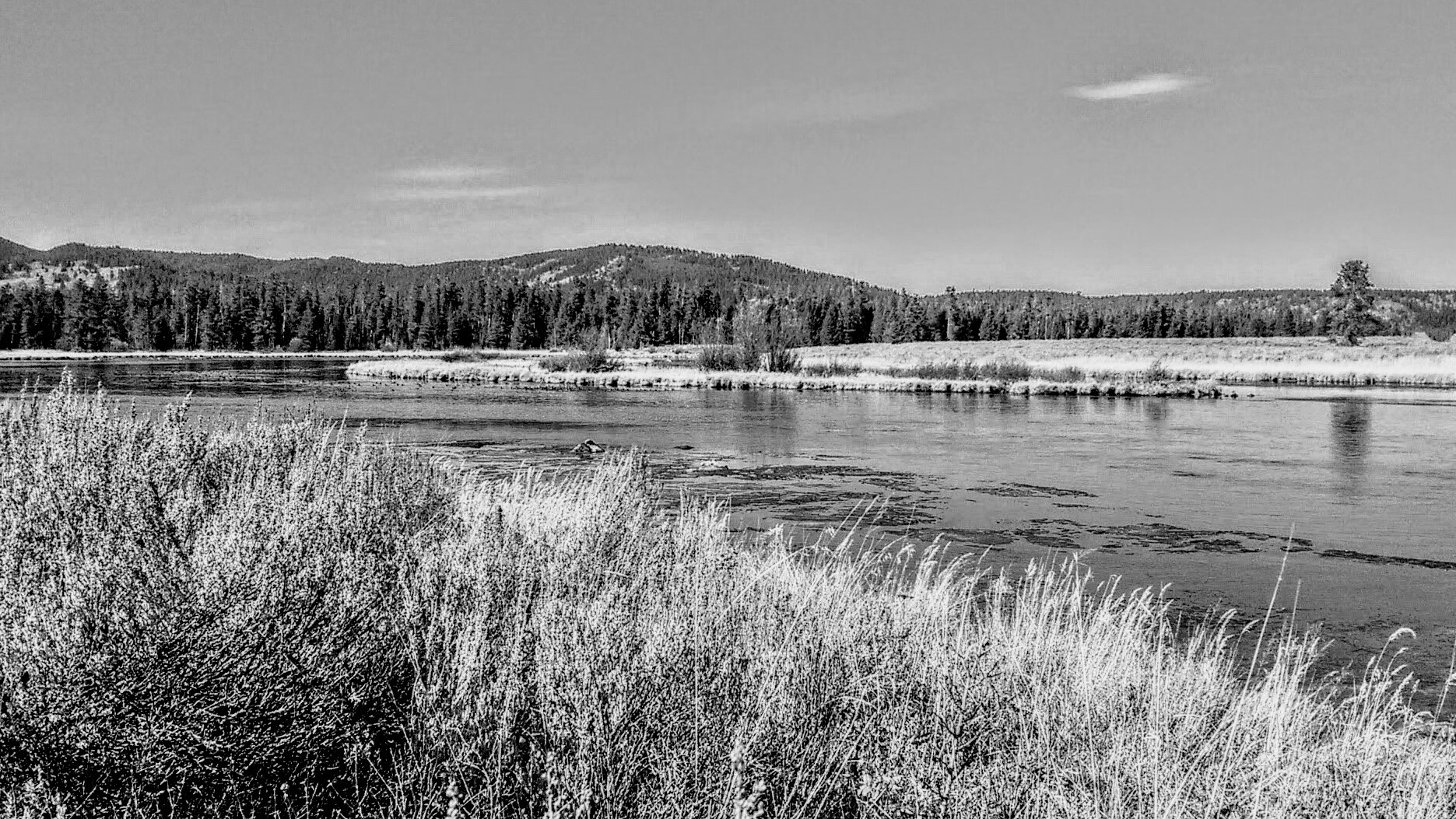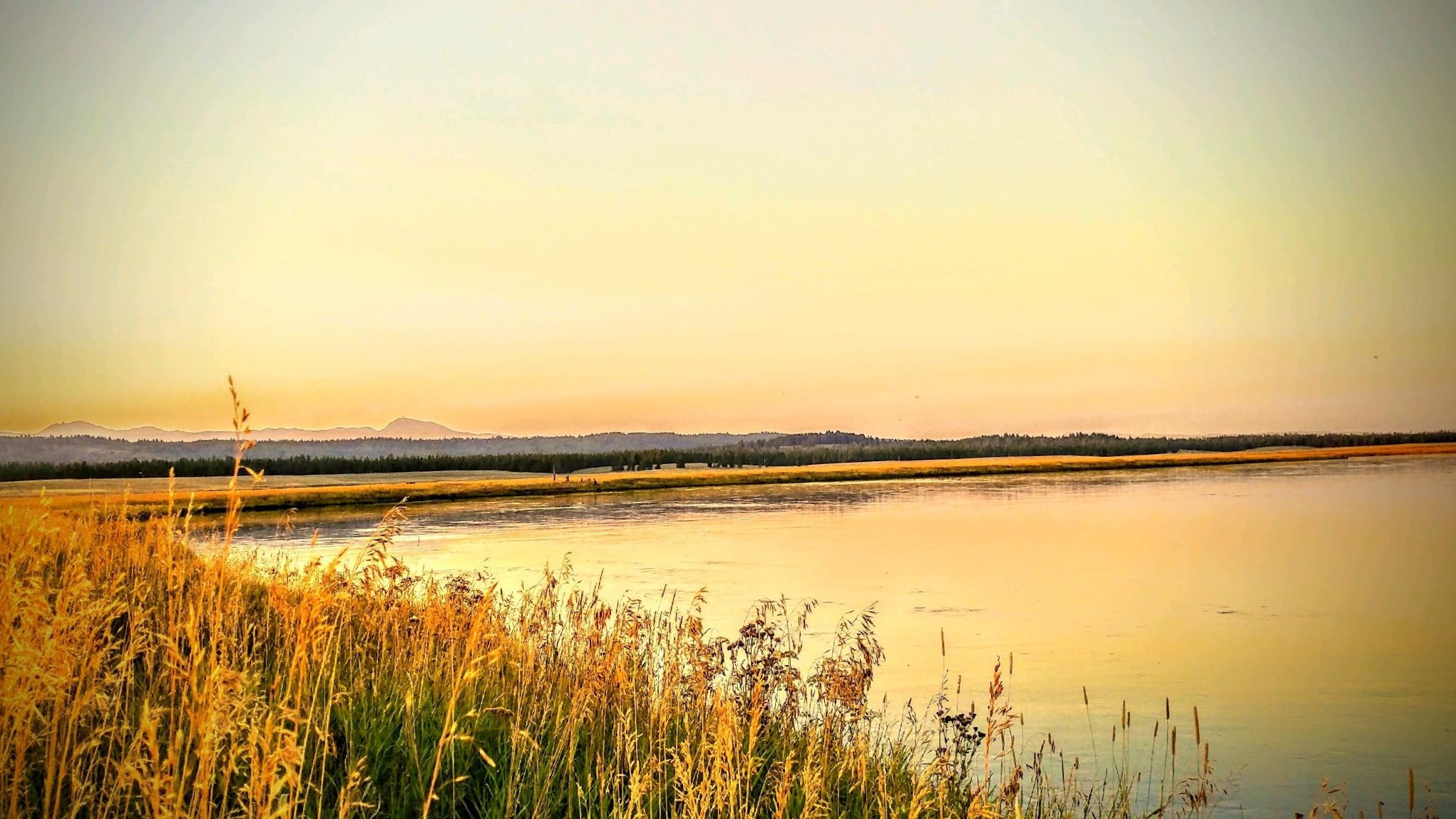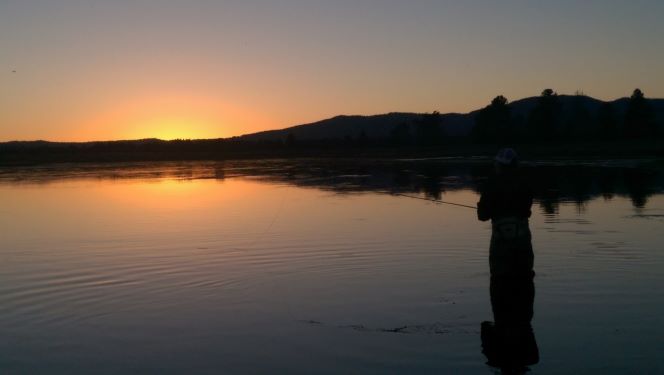Posted by Spencer Madsen on Sep 8th 2018
In the winter of 2014, two years after I started my fly fishing journey, my uncle brought over a book called “Learning From The Water”, by Rene Harrop. Reading this book was the start of my infatuation with the Henry’s Fork of the Snake River, and in particular, Harriman State Park, also known as “The Ranch”. The state park section of the Henry’s Fork was donated to the state of Idaho by Roland and Averell Harriman in 1977. The contract stipulated that this section of the river must be a single barb less fly, catch and release fishery only. This has led to educated, pressured and very wary and highly astute fish. Moreover, the prolific hatches the river produces makes this special place, a mecca for dry fly fishermen. After reading the book countless times, and spending many days and nights dreaming about big fish gently sipping mayflies and caddis, I finally planned my first trip to “The Ranch” in October of 2015.

My first day on “The Ranch” was a classic story of being beat down by the snooty rainbows that call this section of river home. The first stop on my list was a place called “Millionaires Pool”. In the middle of the river there is an island that creates a large pool as the river starts to bend. At times large fish can be found cruising the pool, chowing on reliable hatches of mayflies, caddis, and midges. I walked to the small cliff at the river’s edge to take in the view and look for fish. As I sat on the cliff watching and waiting I spotted a busy trio of good size rainbows picking from thousands of midges on the water. With rookie's nerves and excited enthusiasm I began to develop my approach. I slowly made my down, into the river and started to sneak into casting position. As I waded downstream trying to get into casting range, I noticed that the group of fish were now feeding further downstream than before. Making the approach longer and more difficult, each step increasing the likelihood of spooking them. Often, the fish in “The Ranch” are very alert to any disturbance, so stealth is key. Despite my better judgement, I kept wading downstream towards the pod of rising fish. Then, all of a sudden, feeding activity abruptly stopped, I had put the pod of fish down. I had just made my first rookie mistake on “The Ranch”: chasing fish.

After getting worked my first day I had learned three very valuable lessons in Ranch fishing: slow down, have patience, and let the fish behavior tell you what to do.
On my second day of fishing I decided to check out the top end of “The Ranch”. As I pulled into the parking lot I watched large, dark gray clouds roll-in from the east. It was a crisp autumn morning as I pulled on my waders and started stringing up my rod. As I was making my last preparations to head to the river I felt a snowflake softly land on my cheek. There was no wind, great cloud cover, and light snow. In other words, it was perfect baetis weather. I could not have been more excited! As I started walking down the trail into “The Ranch” I found a fish rising to the little baetis mayflies that were peppered on the surface of the water. This time I was ready to take my time and hopefully be able to make a few casts at this impressive surface feeder. Fifteen minutes later I was within comfortable casting range. Standing in the cool water of “The Ranch” I began to look around at the beautiful place I was in. I had a large fish rising right before my eyes eating the little sailboat silhouette mayflies floating down stream. It was the most perfect scenario I could dream of.
I knotted a size 22 baetis cripple to my 7x tippet and was ready to cast at my first “Ranch” fish. The fish was stationed at the bottom edge of an exposed weed bed that was funneling all the bugs right into his feeding lane. My first cast landed right on the money, in front of my fish. But unfortunately the undulating weeds created several different currents on the surface and my fly was quickly pulled out of the feeding lane. The next cast was to the same spot but with the addition of a large upstream reach cast that allowed the fly to drift a few moments longer, towards the fish than the previous attempt. As the fly passed over the fish everything felt just right, and I tensed up thinking, “here it comes,” the big, sassy rainbow ate a natural baetis just inches away from my fly. The first of many heartbreaks I experienced this trip. Many fly changes and multiple drifts later left me with the same result, watching the fish eat natural insects right next to my fly. I was ready to call it and head in for the day, running from the mental challenge and beat down I just took. But, I decided I’d try one more fly change. I added 5 feet of 7x tippet and attached a size 22 no-hackle that I had tied in preparation for the trip.

This time I was dialed into what needed to happen. The first cast landed in loose coils and drifted cleanly towards the fish, but I was out of sync with the fishes feeding pattern, the fish had eaten just moments before my fly passed overhead. The second cast landed in the same spot but this time it coincided with the feeding rhythm of the happy fish. As his big snout broke the surface and sucked down the little no hackle, I paused for a moment in shock as to what just happened. I lifted my rod to the weight of a solid fish and felt a big bend. It was the moment I had been dreaming of since I first read about the Henry’s Fork. However, the moment was short lived. When the fish felt the sting of the hook the once calm flat water of “The Ranch” erupted with an impressive tantrum from a sassy rainbow. The fish dove straight into the weed bed and in the blink of an eye the weight was gone. I had yet again been worked-over on “The Ranch”. As I slowly retrieved my fly a smile crept to my face as I had found my perfect river, and I knew that I would be back prowling the banks of the Henry’s Fork looking for rising fish.

From that day on, the infatuation I had with the Henry’s Fork and “The Ranch” has become an obsession. From that special day I would do my best to get back to “The Ranch” whenever I had a day or two to spare, and that has not changed. I will still make the 4 ½ hour drive as often as possible to the Henry’s Fork in search of big, hook resistant rainbows in the place that started quest to become proficient at tying and fishing with delicate dry flies. As Rene Harrop states many times in his book, “we are lucky people.” I truly feel that way about the unique opportunities this river provides to fish dry flies to large, sophisticated fish. We truly are lucky people to have this place in our backyard.

